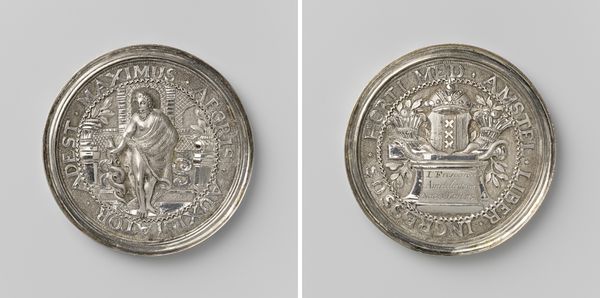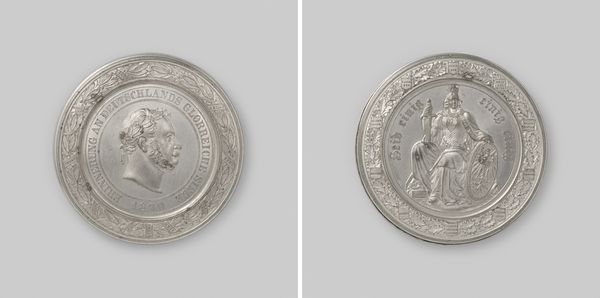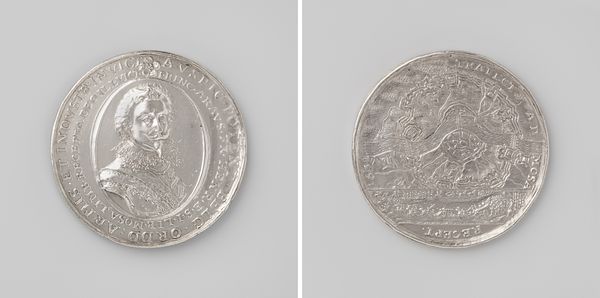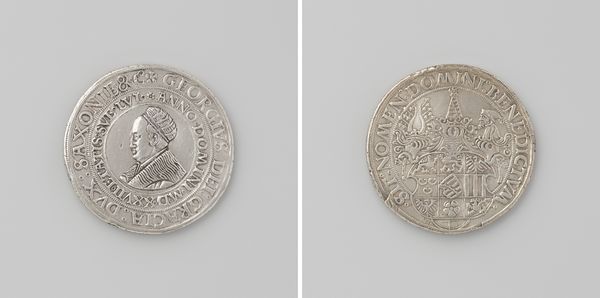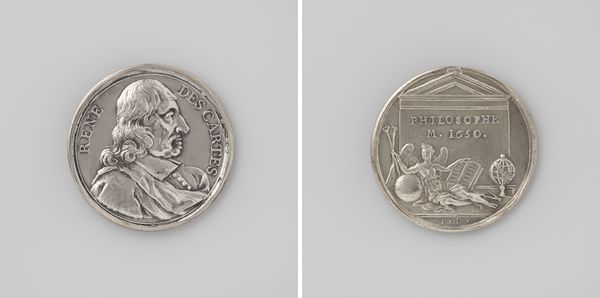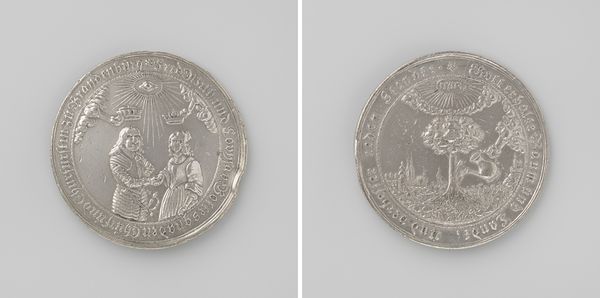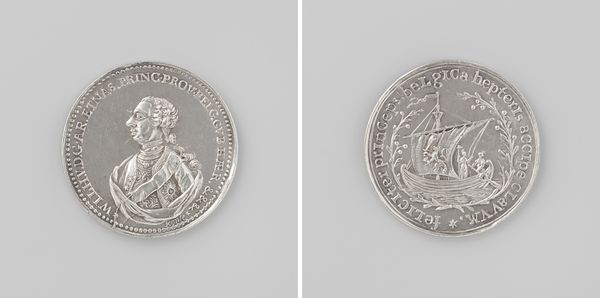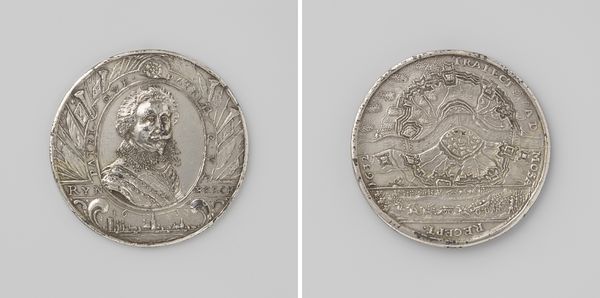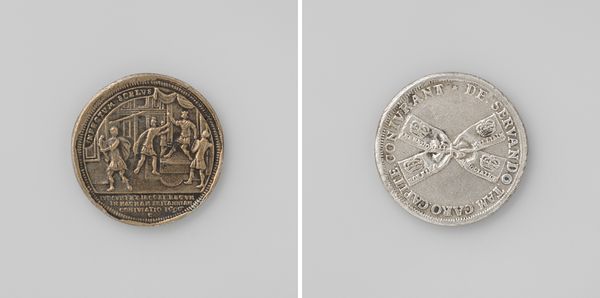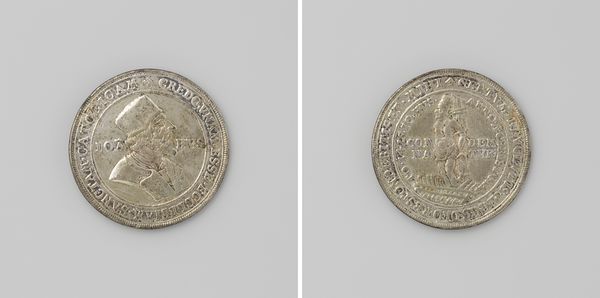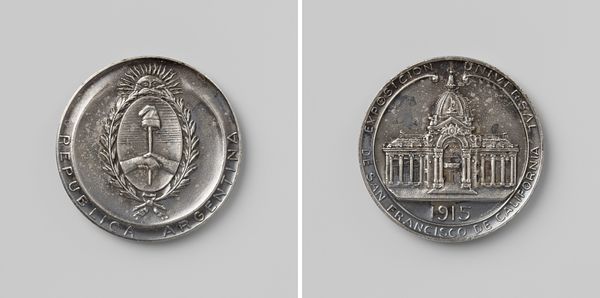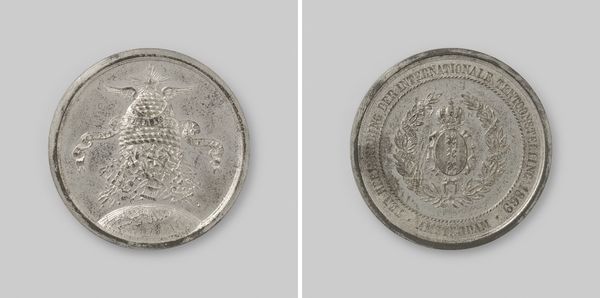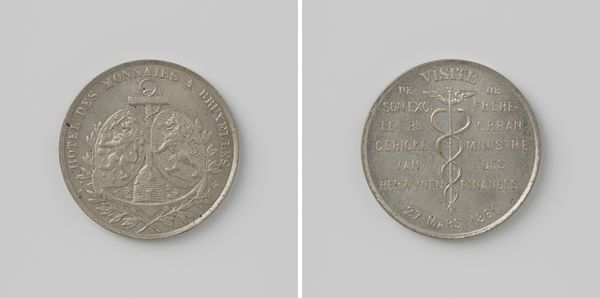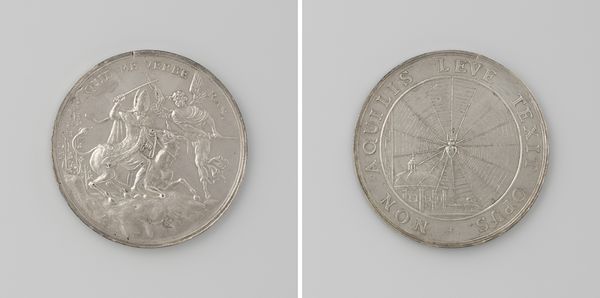
Collegium Medicum te Amsterdam, toegangspenning voor de hortus medicus voor C.H. a Roy, lid van de Commissie van Geneeskundig Toevoorzicht 1696 - 1828
0:00
0:00
metal, relief, sculpture
#
dutch-golden-age
#
metal
#
relief
#
sculpture
Dimensions: diameter 5.6 cm, weight 57.45 gr
Copyright: Rijks Museum: Open Domain
Curator: This is an admission medal dating from 1696 to 1828, connected to the Collegium Medicum in Amsterdam. It was designed for C.H. a Roy, a member of the Medical Oversight Committee, granting access to the Hortus Medicus, Amsterdam's medicinal plant garden. Editor: My first impression is how intricate the design is, especially considering the likely scale. The detail is really impressive, a sort of classical monumentality conveyed in miniature. Curator: Absolutely. Medals like these were significant markers of status and affiliation. The Amsterdam Collegium Medicum held considerable power in regulating medical practice. It controlled who could practice medicine, dispense drugs, and, importantly, access resources like the Hortus Medicus. Editor: I'm drawn to the imagery. On one side, we see a classical figure—perhaps Aesculapius, god of medicine—interacting with a serpent, which is still an important symbol in the medical world. What’s particularly interesting to me is considering what that access meant, in terms of privilege and exclusion. Curator: The serpent entwined around a staff is indeed a symbol of medicine. And the Hortus Medicus itself, the Amsterdam botanical garden dedicated to medicinal plants, was central to pharmaceutical knowledge and medical training at the time. Editor: It is telling that we can trace some of the political dimensions of 17th-century science in an object that easily fits in your palm! We see a commitment to scientific advancements in the service of medicine that would have lasting implications on European power. Curator: It highlights how exclusive these systems could be. Admission was restricted to individuals within specific social networks and power structures. These were definitely very carefully monitored institutions. Editor: That adds a critical layer to my understanding of what this represents: a token, but also a boundary. Thinking about medicine, access to knowledge, and even public health in such deliberately regulated conditions offers a window into thinking more about care, accessibility, and the medical field. Curator: Indeed, this admission medal provides insights not only into medical history, but into social hierarchies, power dynamics, and institutional control within 17th-century Amsterdam. It really shows how deeply entwined knowledge, power, and privilege truly were at the time. Editor: Exactly. A beautifully crafted reminder of what gatekeeping can look like, even in the pursuit of knowledge and healing.
Comments
No comments
Be the first to comment and join the conversation on the ultimate creative platform.
